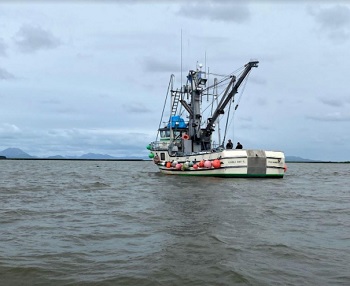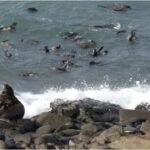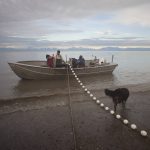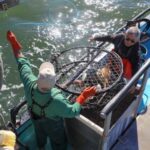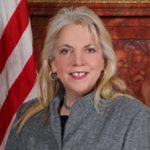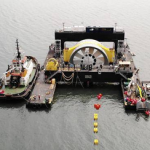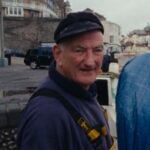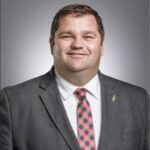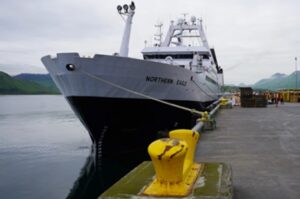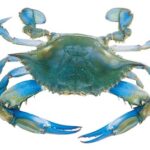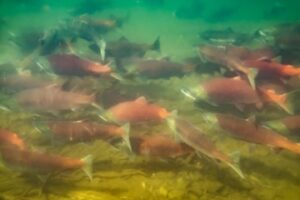Tag Archives: Bristol Bay
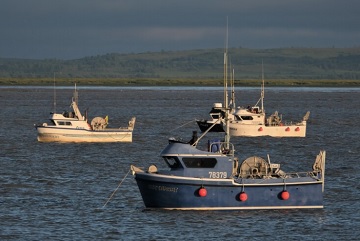
Bristol Bay Fisheries Report: July 4, 2022
Messages to the fleet – Happy July 4thto Captain Mike “Fishhead” Fourtner and the hard-working crew on the newly christened “Twin Tuition” on he first season earning her way on the bay! Every challenged faced in making this season’s opener in time showed how fisherman and the industry rallied to help. Have a great season, be safe and watch that line. Take baby pictures! From the crew of the Deborah Ann – Charleston SC. To Lewis and Joanna on Coffee Point – call home. Happy 4th of July. Audio reports, lots of updates. >click to read< 20:01

Silver Bay Seafoods agrees to pay fine for illegal dumping in the Naknek River
Sitka-based Silver Bay Seafoods earlier this month agreed to pay a fine of $467,469 for illegal dumping at its Naknek River facility in Bristol Bay. The company has also agreed to address violations of its state permit to discharge pollutants. The state Department of Environmental Conservation said in a press release that Silver Bay “repeatedly discharged significantly more fish waste into the Naknek River than permitted” in 2017 and 2020. State inspectors also found numerous violations at the facility during a scheduled inspection last year, like discharging bloody water. >click to read< 12:11
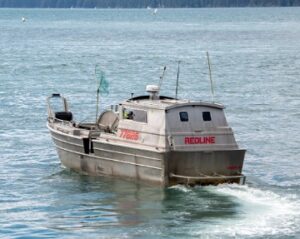
PWS harvest soars above 9M fish, statewide catch exceeds 16M salmon
Commercial harvesters in the Prince William Sound region delivered upwards of 371,340 salmon through Tuesday, June 28, while the statewide preliminary harvest exceeded 16 million fish, including deliveries in Bristol Bay, Cook Inlet, Kodiak and the Alaska Peninsula. Harvests reached almost 8% above year-to-date 2021 (2020 for pinks), led by strong sockeye harvests in the Alaska Peninsula and Bristol Bay regions, according to Sam Friedman, who is producing the McKinley Research Group weekly in-season reports on behalf of the Alaska Seafood Marketing Institute. For Prince William Sound, harvests and the weights of salmon harvested remained below the 10-year average, according to Alaska Department of Fish and Game biologist Jeremy Botz, in Cordova. >click to read< 09:06
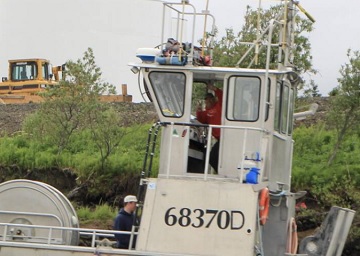
Bristol Bay Fisheries Report: June 28, 2022
The price of fuel is on the rise in the United States and many industries are feeling the pressure. Rural areas generally face higher prices for fuel, but in recent months, Bristol Bay residents have seen those prices creep even further. Bristol Fuels in downtown Dillingham Gas set their price at $5.49. In Naknek, the same company charges even more, at $6.64 per gallon. Shannon Williams is based out of Naknek and fishes on the east side of the bay. She said that she’s going to need to work harder to keep up with expenses. “It’s gonna be hard,” she said. “I’ve got to pick a lot of fish to pay my bill.” >read, or listen to the report< 18:39
Peter Pan Seafoods announces price increase to $1.15 per pound for Bristol Bay sockeye – Peter Pan’s vice president, Jon Hickman, says the price bump is part of the company’s assessment of the season so far. “And wanting to relay that to the fishermen, as we consider our business partners in this industry, that we believe we can go a little higher,” >click to read<
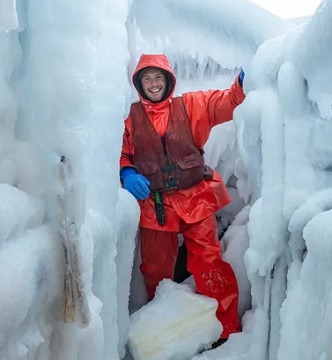
Cody Umentum of Denmark went from a Mexican beach to the F/V Wizard
Little did Cody Umentum know that, in the four years after he graduated from college, he would visit over a dozen countries on multiple continents and have one of the most demanding, rewarding and incredibly dangerous experiences of his life. He went from sipping cocktails on a little island in Mexico to fishing for crab as part of the crew under captain Keith Colburn of the FV Wizard, a 156-foot boat featured on the Discovery Channel series “Deadliest Catch.” In all, he took two trips aboard the Wizard, but the second one truly tested his limits. With terrible storms, in the middle of the northern reaches of the Packifc ocean, and working over 80 hours a week, he often thought he had made a mistake. >click to read< 09:45

Survey says processors are beefing up for record Bristol Bay run, but it still might not be enough
If the state’s forecasts for the 2022 Bristol Bay sockeye run are even close to accurate, there could end up being millions more fish to catch than anyone is willing, or able, to buy. A survey conducted in January by the Alaska Department of Fish and Game of 15 Bristol Bay-area processors found that the processing companies intend to purchase up to 52 million sockeye this year. However, the department is predicting a record Bristol Bay inshore run next year of more than 73 million fish, which would provide nearly 62 million available for harvest based on the escapement goals for each of the major river systems that feed the Bay. The record-level prediction follows a record inshore run of more than 66 million sockeye last year that lead to a commercial harvest of 40.4 million fish, one of the largest Bristol Bay sockeye harvests ever. >click to read< 12:07
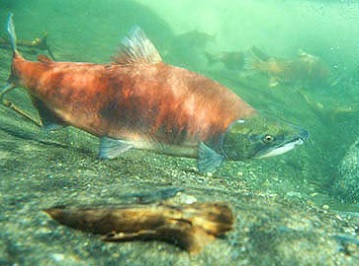
Boom-bust commercial salmon season doubles 2020 value
This summer was significantly better for commercial salmon fishermen in Alaska than 2020, though that success was far from evenly spread. Commercial salmon fishermen hauled in salmon valued at $643.9 million this season, according to the Alaska Department of Fish and Game. That’s more than double the 2020 value of $295.2 million, but still a little behind the estimated 2019 value of $657.6 million. Overall, 2021 ranks fairly well in the historical averages for numbers of salmon harvested and poundage as well as in value, according to Fish and Game data. >click to read< 16:37

One Alaska Bay Is Booming With Salmon, For Now
Bristol Bay’s sockeye harvest has long made up about half of the global catch of this species, in a seasonal blitz as short as it is enormous: The fishery lasts a mere six weeks. Each summer, 15,000 seafood processors, boat-based fishermen, and setnetters, including families such as the Bandles, gather here to support an industry worth more than $2 billion in 2019. Some fishermen will net enough cash to live on until the fish come back the next year. And this year, Bristol Bay outdid itself,,, But such riches are localized. Outside of Bristol Bay, salmon fisheries are failing, including those on British Columbia’s famed Fraser River, on Alaska’s Chignik and Copper Rivers, and in Cook Inlet. Five hundred miles north of Bristol Bay, Yukon River salmon runs have totally collapsed. >click to read< 12:35 ADFG: Bristol Bay sockeye runs set all-time record – It’s official: Bristol Bay’s 2021 commercial salmon season was the largest on record. >click to read<

When Sailboats Ruled Bristol Bay
One hundred and thirty-two years ago, the Bristol Bay commercial fishery began on the shores of the Nushagak River when the first cannery went into operation and canned a little more than 4,000 salmon. Within four years, three more canneries appeared on the Nushagak, and within a decade canneries were built on the Naknek and Kvichak rivers. The dawn of the 20th century saw dozens of canneries around Bristol Bay catching, processing and canning millions of pounds of sockeye salmon every summer. By 1910, Bristol Bay accounted for 40 percent of Alaska’s commercially caught salmon. Even today, Bristol Bay makes up about 40 percent of Alaska’s salmon value. photo’s, >click to read< 11:50
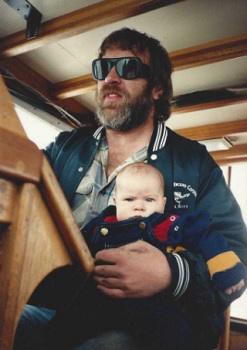
Net migration: Young commercial fishermen ship out of Cook Inlet
The Cook Inlet salmon fishery was once an economic engine for Kenai. But the fishing there is no longer lucrative. Many fishermen with deep ties to the inlet are retiring, or moving elsewhere. The F/V Nedra E is smaller than the other boats bobbing at the dock in Naknek. Thor Evenson didn’t have Bristol Bay in mind when he designed the boat for his parents, Nikiski homesteaders Jim and Nedra Evenson. Until last year, she’s been a Cook Inlet boat, captained by Jim, then his nephew, and now his grandson, 32-year-old Taylor Evenson. Last year, Taylor couldn’t put it off any longer. So with the help of the boat’s original builder, Kevin Morin of Kasilof, he gutted everything behind the cabin, chopped several inches off bow and stern, and installed a brand new deck, to bring the Nedra E in line with Bristol Bay standards. >click to read< 07:50
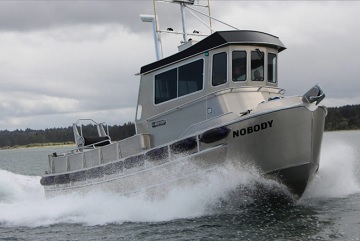
A Perfect Pairing. A Q&A session with John Deere and Mike Blocher of North River Boats
North River Boats in Roseburg, Oregon is one of the largest heavy-gauge aluminum boat manufacturers in the United States with an estimated 10,000 vessels plying the water today. The company continues to diversify, adding the legendary Bristol Bay hull to its lineup. John Deere: What led to the building of this new commercial fishing vessel? Mike Blocher: We build heavy-gauge aluminum boats. During an International Workboat Show, we were approached to build a bay boat. Our general manager and I traveled to Bristol Bay and started looking at boats, talking with fishermen, and found out what worked and what did not. JD: What did you find out? MB: Bristol Bay is unlike any other commercial fishery,,, >click to read< 11:06
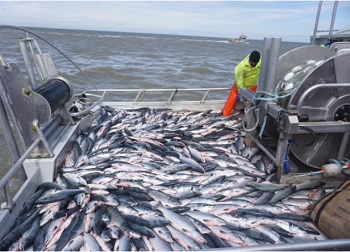
Bristol Bay Fishermen Donate Salmon To Yukon River Villages responding to lack of subsistence salmon fishing
Around 10,000 pounds of Bristol Bay chum and Chinook salmon are scheduled to arrive in a Lower Yukon River hub on July 23. The fish will then be distributed to surrounding villages. The donation is in response to a lack of subsistence salmon fishing on the Yukon River this summer, following record low salmon runs and tight fishing restrictions. A nonprofit called SeaShare has partnered with commercial fish processors in Bristol Bay to donate the salmon to Lower Yukon communities. >click to read< 08:17
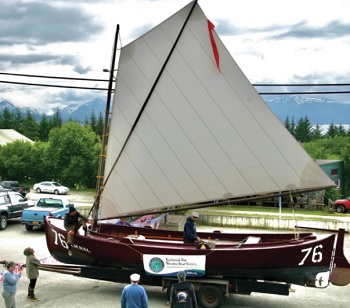
“Sailing Back To the Bay” trip gets closer to launch
The launch of No. 76, a 29-foot restored Libby, McNeil and Libby double-ender sailboat once used for commercial fishing in Bristol Bay, and its journey in the decades-old wake of fishing boats traveling from Homer to the bay have been rescheduled for 2022. The delay was fortuitous, allowing time for Frank Schattauer Sails of Seattle to complete a new sail that was hoisted on the vessel’s single mast by Dave Seaman and friends on July 3, in the NOMAR parking lot. Seaman oversaw the restoration work and will captain No. 76 when it makes its voyage a year from now. “(The vessels) had keels and ribs of white oak, planking of Port Orford, Oregon’s yellow cedar, and were sprit-rigged with a wing-shaped sail,” said Seaman. “Belying their sweet lines, these boats were built for work.” photos, >click to read< 14:44
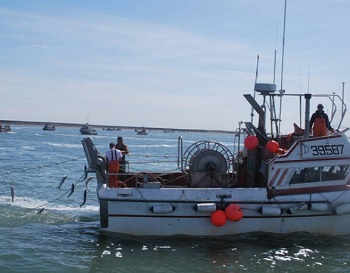
More of the same a good thing as Bristol Bay gets underway
Early indicators are pointing to yet another strong year in the massive Bristol Bay sockeye fishery, which is contrasted against the continued struggles in many of the state’s other large salmon fisheries. Just more than 3.2 million sockeye had been harvested through June 27, according to Alaska Department of Fish and Game figures, with the Nushagak District accounting for more than half of the catch so far at nearly 1.7 million fish. The 3.2 million-fish harvest to-date this year is between the comparable totals for recent years; 1.2 million sockeye were harvested through June 27 last year, while more than 4.4 million were caught by the same day in 2019. With sockeye harvests of more than 40 million fish and total runs greater than 56 million sockeye, both of the last two years have been among the most productive in the history of the Bristol Bay fishery. >click to read< 19:54

DEVELOPING STORY: Peter Pan Seafoods announces base price for Bristol Bay sockeye
Peter Pan Seafoods will pay its fishermen a base price of $1.10 for sockeye this season. This is the first time in at least 25 years that a Bristol Bay processor has announced its base price this early in the year, according to Travis Roenfanz, the Bristol Bay manager for the company. Roenfanz made the announcement at the PAF Boatyard in Dillingham before a crowd of fishermen. >click to read< 09:48
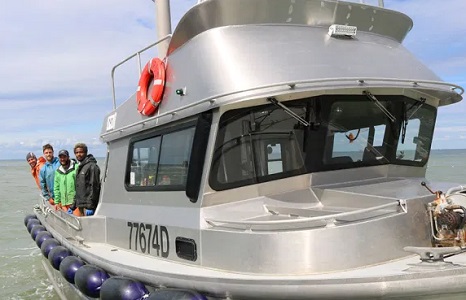
Made for Bristol Bay: A Conversation with Sockeye Salmon Guru Steve Kurian
In 2002, when Steve Kurian graduated from college in Pennsylvania, he moved west to Idaho to take a job in forest management. There, Steve rented an apartment from an old, crusty commercial Alaska fisherman who told stories of an ocean chocked-full of salmon, sea monsters and a real-son-of-a-buzzard white whale that ate one of his crewmembers the season before. Steve wasn’t quite shanghaied, but the old man’s stories were enough to make him quit his job and go setnetting in the Naknek district of Bristol Bay. His then girlfriend and now wife, Jenn—the two have been together since they were 15—got a job fishing a neighboring setnet. >click to read< 08:10
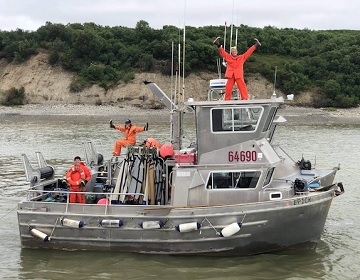
The Alaska Wilderness Prepared Me For Coronavirus
Every summer I make the long trip up to Naknek, Alaska — an outpost of human settlement among the tundra, volcanoes, and wildlife of southwestern Alaska to be part of the commercial sockeye salmon fishing season in Bristol Bay. From the airport at King Salmon, we drive the lonely stretch of pavement a half hour north, to the boatyard in which the Epick, a 32-foot-long, aluminum-hulled gillnetter that I call home for several weeks out of the year, resides through the winter. My crew and I prep the boat and put her in the water, where we make use of the abundance of daylight typical to Alaskan summers to try and catch as many salmon as possible. >click to read< 11:47

Alaskans pursue permanent protections for Bristol Bay
Robin Samuelsen still recalls his first meeting about the prospective Bristol Bay. It was around 2005 or 2006, in Dillingham, Alaska. Listening to an early plan for developing a copper and gold mine in the spawning grounds of Bristol Bay’s abundant salmon, this Curyung tribal chief and commercial fisherman quickly made up his mind. “You’ll kill off our salmon,” Samuelsen remembers saying, adding: “I’ll be up there to stop you.” >click to read< 09:25
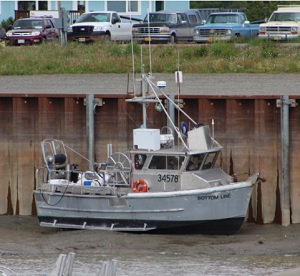
Bristol Bay sockeye a high point in the state’s unpredictable salmon season
More than 58 million sockeye salmon returned to Bristol Bay this summer. It’s another in a series of enormous runs to the fishery. The commercial harvest was just as impressive,,, many other areas of the state were far below their forecast. Across all species, the value of the state’s commercial salmon season dropped more than 50% from last year — 56% below last year. 2020 was valued at $295.2 million, while last year was valued at $673.4 million. Harvests were also down by 44%. >click to read< 12:42

Some bright spots for high-value salmon, halibut in 2021
Following the trend of the last several years, the salmon forecast for the 2021 salmon season in Bristol Bay looks positive. The Alaska Department of Fish and Game is forecasting a total return of about 51 million sockeye salmon, with an inshore run of about 50 million. That’s about 6 percent better than the average for the last decade and 45 percent greater than the long-term average.,, Halibut outlook – Stock numbers in the Pacific halibut fishery are overall still declining, but there are individual bright spots in some regions. >click to read< 10:43

Relief and disappointment: Bristol Bay reacts to Army Corps of Engineers Pebble permit denial
Pebble Mine has been stopped, likely for good. The debate around the mine has consumed Bristol Bay for more than a decade. Now the people who live here are coming to terms with the news. “I was ecstatic. I was elated. I was so happy to hear that it was finally over,” said Billy Trefon, Jr. from Nondalton,,, But for those who backed the project, the decision comes as a harsh blow. Sue Anelon works for the Iliamna Development Corporation. Iliamna is another community close to where the mine would have been. Anelon says the area is economically depressed. She sees the Army Corps’ denial as a bad decision for the state as well as the Lake Iliamna region. “I’m very worried right now, because there’s a lot of people without jobs — they’re depending on the government,” she said. >click to read< 11:31
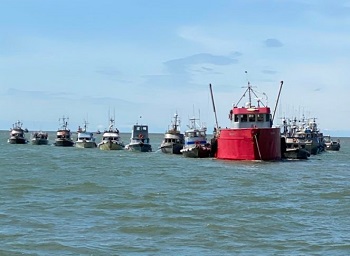
2020 commercial salmon catch, and value took a dive
Commercial salmon harvests proved challenging for the 2020 season, challenged by a global pandemic of the novel coronavirus, with the overall fish catch and its value down considerably from a year earlier. Data released on Monday, Nov. 9 by the Alaska Department of Fish and Game, said the all species harvest has an approximate value of $295.2 million, down 56 percent from $673.4 million in 2019. Fishermen delivered some 116.8 million fish, a 44 percent drop from the 208.3 harvested a year earlier, the report said. >click to read< 18:15

Minnesota family spends summers fishing Alaskan salmon to sell back home
The Rogotzkes, brothers Jay and Tom, dad Roger and uncle Dave, all run their own boats in Bristol Bay, home to the world’s largest sockeye salmon run. The Rogotzkes fish in 32-foot aluminum boats that drift freely, even with 900 feet of net trailing. It was Roger who got the family started in the unlikely profession more than 40 years ago. Back in college in 1980, Roger read about Bristol Bay in a magazine. Intrigued, he bought himself a plane ticket north the next summer. Two years later, in what the Rogotzkes now recognize as an astounding act of faith, Roger’s dad, Bob, mortgaged the family farm in Minnesota to buy his son a fishing boat and permit. That investment paid off, and two years later Bob did the same thing for his other son, Dave. “We really just owe everything to him,” Roger said. That makes this season bittersweet: Bob died in May, just before the four fishermen headed north. >click to read< 18:12
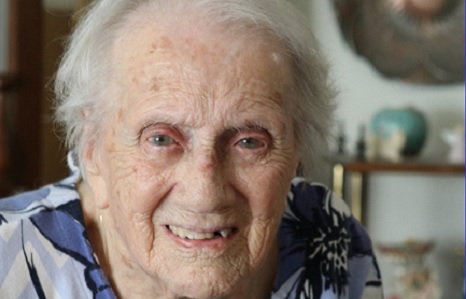
Happy 105th Birthday, Esther ‘Essie’ Lindeman
Born Sept. 15, 1915, Esther “Essie” Lindeman of Grants Pass experienced WWI as an infant, the Spanish flu pandemic when she was 3, reached adolescence during the Roaring ’20s and adulthood during the Great Depression in the 1930s. Most innovations that touch every aspect of our daily lives didn’t exist when Essie was growing up on a dairy farm in upstate New York. Radio was in its infancy, television was in the future, and the Internet and social media were unimaginable. Another interest crept into Essie’s life in the ’30s. A neighboring farm boy she “sorta liked” had left home for a commercial fishing adventure on Bristol Bay in Alaska.,, Happy Birthday, Essie! >click to read< 10:21
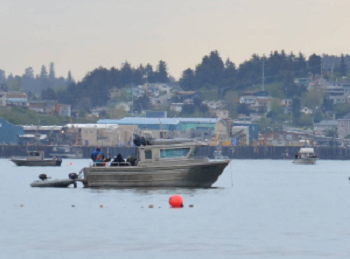
Bizarre salmon season winds down short of state projections
On top all the other effects of the coronavirus pandemic, it’s been a strange year for Alaska’s commercial salmon fisheries. As the fisheries are winding down, the total landings are about 17 percent behind the projections statewide. The Copper River sockeye run was a flop, as was the chum run statewide, and the silver salmon harvest was down everywhere except Kodiak and Bristol Bay. Prices were down, too, and processors had the extra expense and responsibility of keeping workers healthy in remote communities at close quarters. >click to read< 22:14
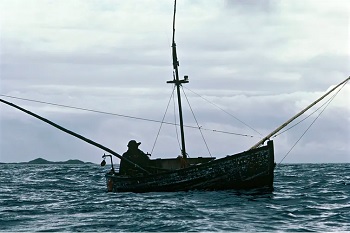
Evolving Business: Bristol Bay salmon fishery dealing with latest challenge, Coronavirus.
Wild salmon return from the ocean to restart a life cycle that has persisted for millions of years. Wild Alaska sockeye (a favorite species of salmon) is caught over the course of a four- to six-week season, from mid-June through July, when the largest remaining wild salmon population returns to Bristol Bay. But the fishermen, seafood processors and communities of Bristol Bay are under threat, and not for the first time. Bristol Bay carries painful memories of the 1918 Great Influenza, which devastated the local indigenous population. Now, the global economy has collapsed in the face of the COVID-19 pandemic, and the market for seafood, often eaten at restaurants, has collapsed along with it.,, And this happens at a time when farmed salmon is an ever-growing part of the industry. (In total conflict with this fishery) >click to read< 10:41

“The Case Against Alaska’s Pebble Mine” – Tucker Carlson goes after Pebble
Fox News pundit Tucker Carlson has become the latest influential conservative to voice concern about the proposed Pebble mine in southwest Alaska. Carlson said in his “The Case Against Alaska’s Pebble Mine” segment, there is a clear partisan split. But not with Pebble. “Suddenly,” Carlson said, “you are seeing a number of Republicans, including some prominent ones, including some very conservative Republicans, saying, ‘Hold on a moment, maybe Pebble mine is not a good idea. Maybe you should do whatever you can not to despoil nature. Maybe not all environmentalism is about climate.'” >click to read< 17:38
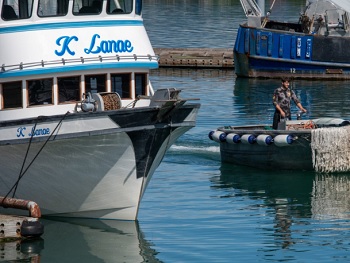
Humpy harvest in PWS surges to exceed 12M fish
Harvests of over 9 million pink salmon over the past week have pushed Alaska’s yearly total to over 25 million fish, including upwards of 12 million humpies caught in Prince William Sound. Alaska Department of Fish and Game finfish area management biologists in Cordova said the cumulative pink salmon harvest in the Sound through Aug. 1 alone was estimated at 10.5 million common property fish and 1.5 cost recovery fish. Preliminary commercial salmon harvest data compiled by ADF&G through Tuesday, Aug. 4, put the total commercial salmon harvest in Prince William Sound at 11.2 million fish, including 12.3 million pink, 1.9 million chum, 902,000 sockeye, 4,000 coho and 4,000 king salmon. >click to read< 19:03






